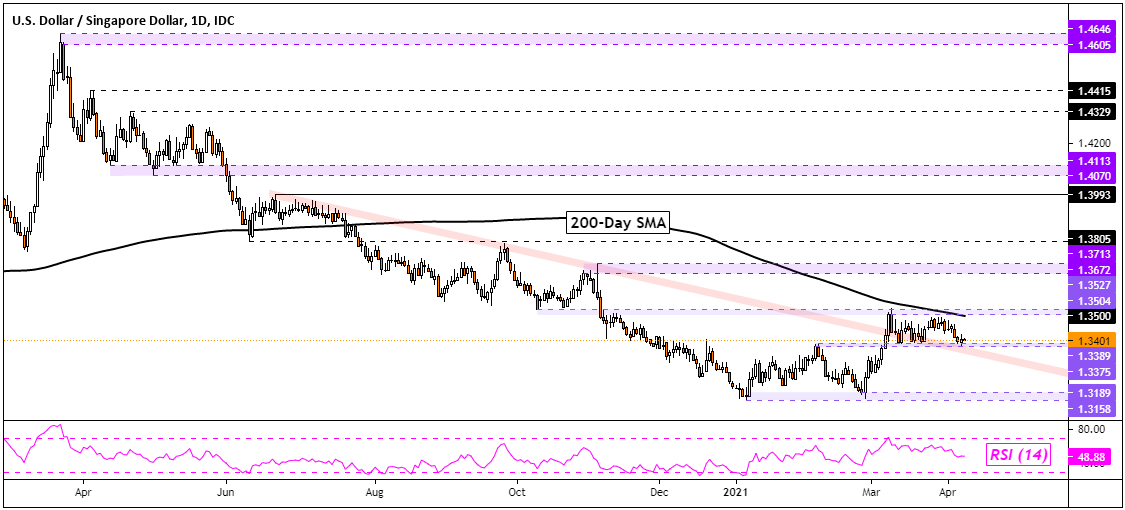

Within a basket of Asian currencies excluding Japan, the baht has underperformed the Indonesian rupiah, which lost about 2% of its value year-to-date, and the Singaporean dollar, depreciating 3% in the same period. The biggest loser in terms of currency value is the Japanese yen with a 12% depreciation, followed by the Malaysian ringgit at 3.9%. When looking at the regional picture, the baht loss of value was in line with other Asian currencies in the first quarter this year. How does the baht compare with its regional peers? The dip is attributed to the conflict between Russia and Ukraine that continues to push up the prices of commodities and the inflation rate, the US Federal Reserve's recent interest rate hike, and China's worsening pandemic and its accompanying challenges for supply chains and shipping, said Mr Poon. The figure represents a depreciation of 3.4% against the dollar since the beginning of the year - its lowest value in five years. The baht is valued at 34.62 per dollar as of May 9. As a result, the baht felt pressure from the dollar's appreciation. This trend continued into April and May because investors entered risk-off territory, meaning they preferred to hold safe currencies like the dollar. However, the Russia-Ukraine war triggered baht depreciation in March. The momentum continued in February as Thailand's economic outlook was rosy, with the tourism sector on the path to recovery despite the Omicron variant. In January, the baht appreciated the most among Asian currencies to 33.29 per dollar, a peak since late November 2021 as Thailand forged ahead with its reopening for vaccinated visitors.

Poon Panichpibool, a markets strategist at Krungthai Bank (KTB), recapped the journey for us. The currency fell further to 34 baht to the dollar towards the end of April. The Thai currency was performing relatively well at the beginning of the year, up to 32.11 baht per dollar on Feb 18, before falling to 33.7 baht on March 28. What are the factors driving the baht's movement this year? While in line with other Asean currencies that have softened against the US dollar, the performance is worth monitoring because it serves as an indicator in the country's recovery. Thailand started off this week with the baht weakening to a five-year low of 34.62 against the greenback. dollar became an important international reserve currency after the First World War, and displaced the pound sterling as the world's primary reserve currency by the Bretton Woods Agreement towards the end of the Second World War.A woman walks past a currency exchange shop on Khao San Road in Bangkok. (Photo: Nutthawat Wicheanbut) Since 1971, all links to gold have been repealed. From 1934, its equivalence to gold was revised to $35 per troy ounce. The Gold Standard Act of 1900 linked the dollar solely to gold. dollar was originally defined under a bimetallic standard of 371.25 grains fine silver or, from 1837, 23.22 grains fine gold, or $20.67 per troy ounce. The monetary policy of the United States is conducted by the Federal Reserve System, which acts as the nation's central bank. banknotes are issued in the form of Federal Reserve Notes, popularly called greenbacks due to their predominantly green color. dollar at par with the Spanish silver dollar, divided it into 100 cents, and authorized the minting of coins denominated in dollars and cents. The Coinage Act of 1792 introduced the U.S. The United States dollar is the official currency of the United States and several other countries.


 0 kommentar(er)
0 kommentar(er)
